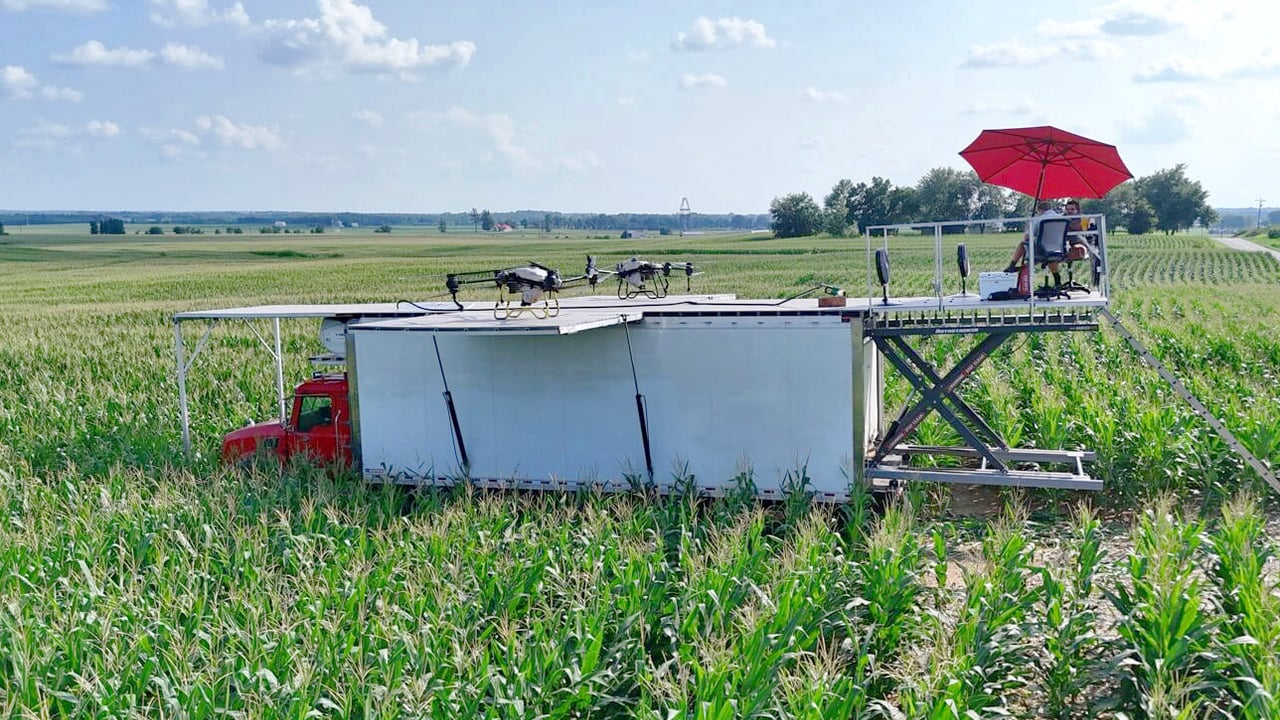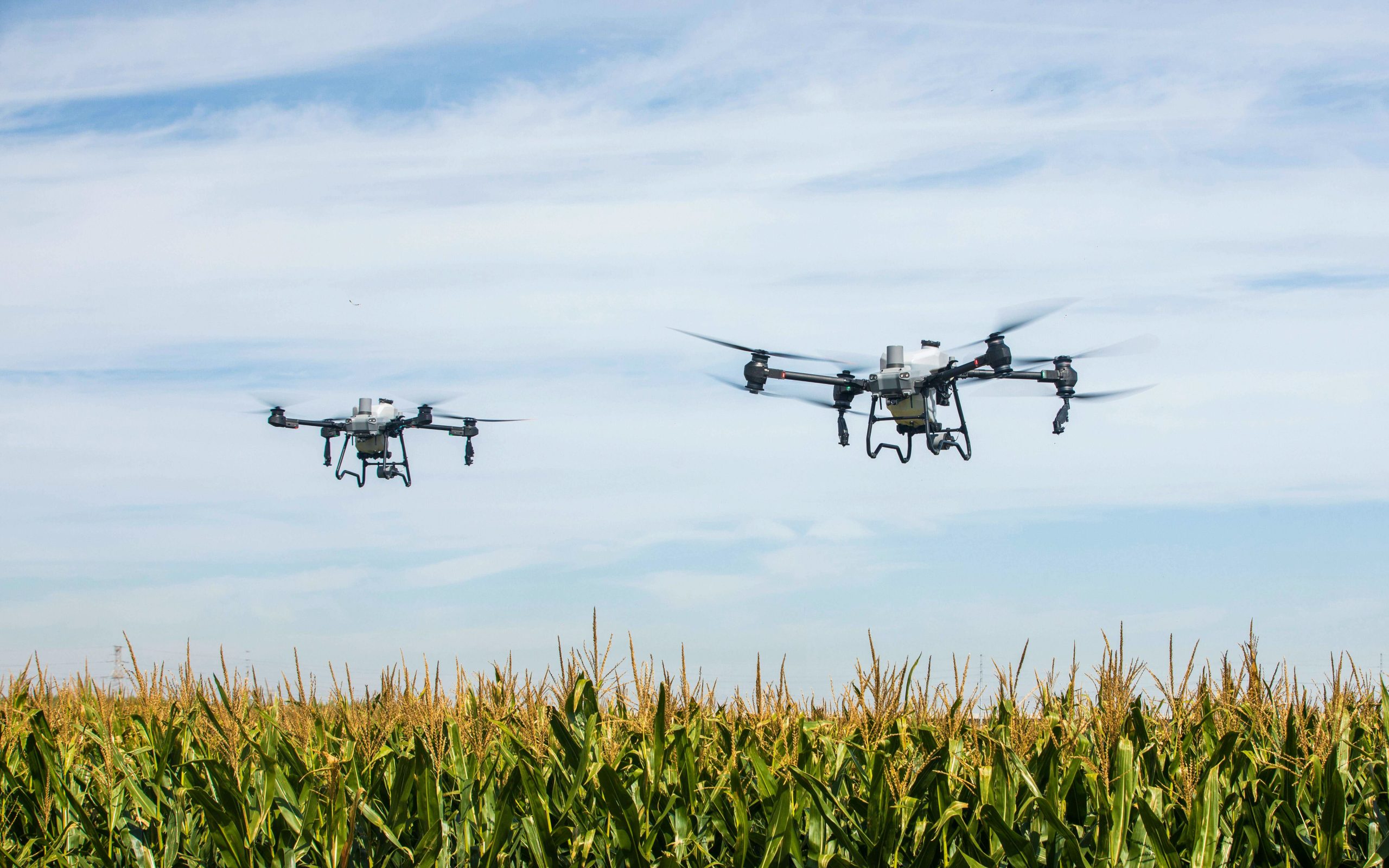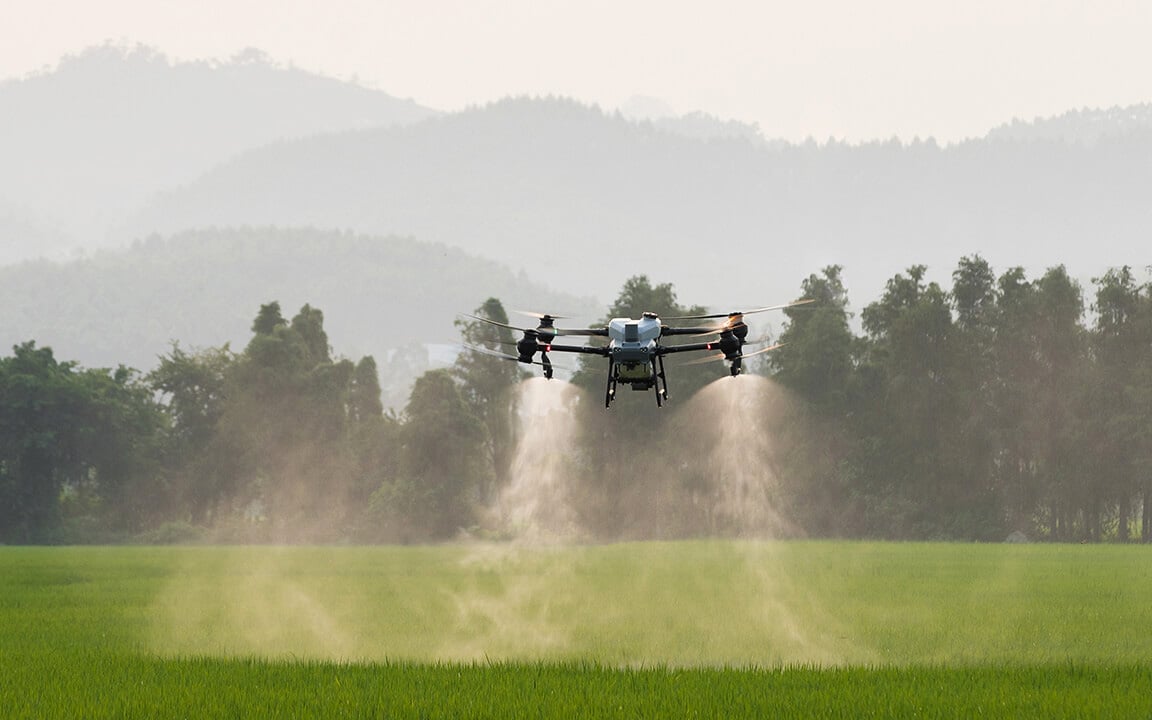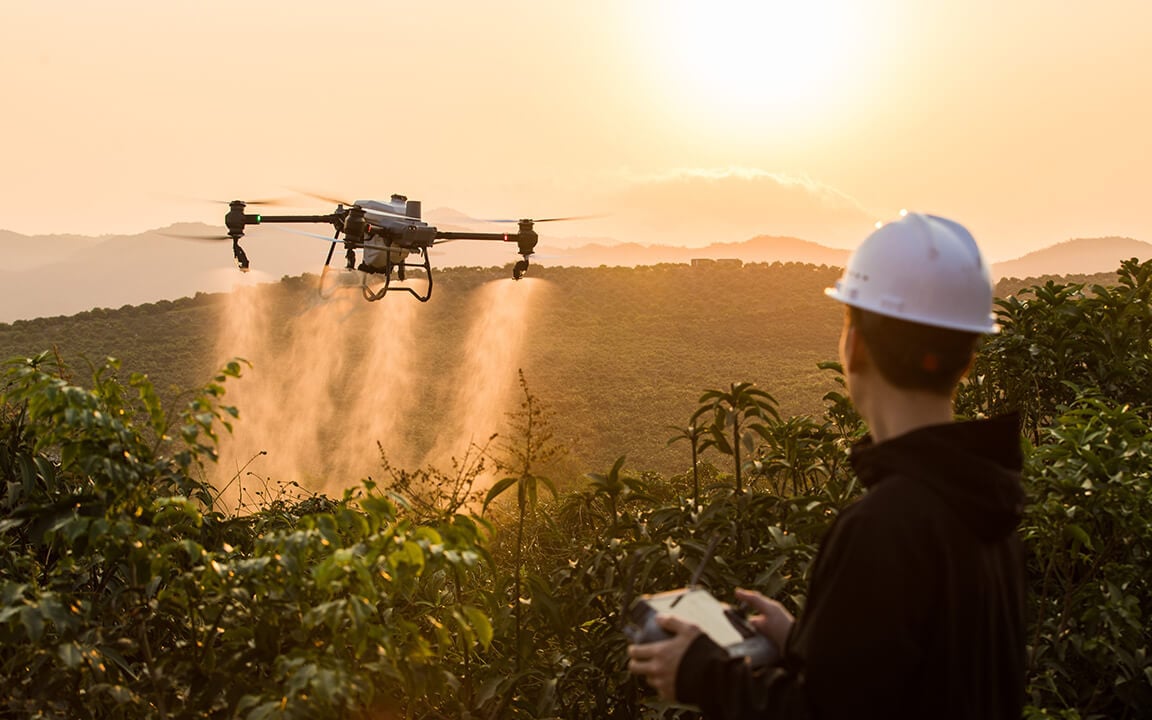Are machinery manufacturers missing out on drones?
Machinery manufacturers have long been keen to impress with their visions of how digital technology is going to shape the world, but they appear to have ignored the advent of drones, a tool that might shape up to be as big a gamechanger as anything else out there.
Not one of the major companies lists a drone amongst their product portfolio or suggests how drone technology may be integrated into their farm management systems.
Yet a recent report from a major manufacturer of commercial drones , DJI, suggests that it is the drone which is leapfrogging a good portion of the digital technology being promoted by tractor makers.
The company recently presented its fourth annual Agricultural Drone Industry Insight Report at Brazil's Agrishow 2025 in São Paulo, South America's major agricultural showcase.
The findings reveal a maturing global industry built around agricultural drones, and it is claimed that they are poised for another phase of growth on a global basis.
This rapid adoption of aerial vehicles to perform crop care tasks, rather than just record what is happening on the ground, is a minor revolution happening today that many in northern Europe appear blissfully unaware of.
The report notes that regional aviation authorities are Increasingly implementing friendlier policies to accelerate precision farming and smarter crop protection technologies worldwide, and it is in crop protection that there may be the greatest potential for drones.
Argentina, for instance, has reduced restrictions for drone deployment in agricultural areas, while Spain has simplified the approval process for their use within the agricultural sphere.
Meanwhile, countries such as Brazil have further standardised the process for pilot training, making it easier for people to operate them legally for pesticide application.
Here in Europe, the EU's position is that derogations to permit aerial spraying (including by drones) are possible in special cases subject to certain conditions.
Aerial spraying must represent clear advantages in terms of reduced impacts on human health and the environment compared to other methods, or where there are no viable alternatives, provided that the best available technology to reduce drift is used.
This then sets the stage for the use of the drone in European agriculture that has, so far, been more or less confined to crop surveillance rather than treatment, which is where it is already being used elsewhere.
Countries with less sophisticated machinery to hand have gone ahead and allowed aerial control of weeds and pests, bypassing the investment in ground-based sprayers.
Drones' ability to combine identification and spot-treatment of weeds may have made ground-based machines unnecessary in the developing world for this operation, and could well reduce the use of them in the west.
The standardisation for pilot training has also driven an influx of young people and women. At the end of 2024, 400,000 DJI Agriculture models were estimated to be in use globally, up 90% from 2020.
It is also estimated that the adoption of drone technology has saved approximately 222 million tonnes of water and significantly reduced carbon emissions globally.







